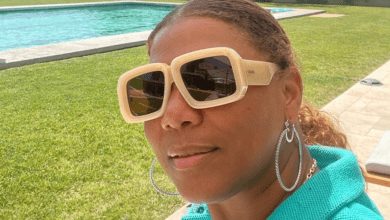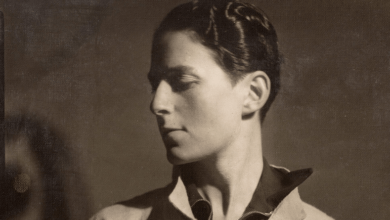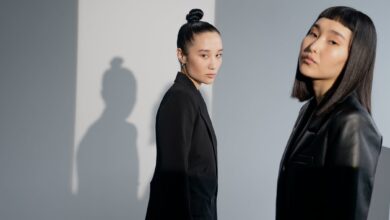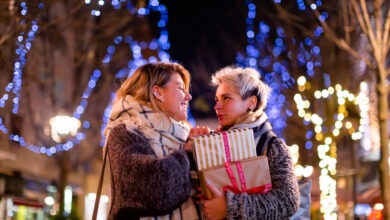Almost one year ago Time magazine introduced us to Casey Legler, a French former Olympic swimmer-turned-model. What made Casey so interesting on the catwalk was she was working in the men’s shows, modeling alongside males in pants and sweaters and leather jackets. Androgyny has most often been part of women’s fashion, with Jenny Shimizu‘s cropped-do and overt masculinity making Calvin Klein a boundary-pusher in the ’90s, and more recently Andrej Peji donning both menswear and womenswear for designers like Jean Paul Gaultier. But the new trend of late embraces androgynous women crossing over into clothing created for the opposite gender, as fashion is still, unfortunately, clearly described and divided by these specific lines.
In a piece for The Guardian over the weekend, Casey writes,
Corporate America, this article is for you.Interestingly, the individuals mentioned have all been hailed as queer icons, even Stella Tennant, a straight-identified model and mother of four. Oftentimes the queer community serves as tastemakers, a counter-culture with our collective fingers on the pulse of the zeitgeist before the mainstream can become the wiser. Yet we’re also still second class citizens in so many ways that we have to wonder how much we are truly valued when it comes to our influence. Not enough.The first thing I want to get out of the way is to ask you to look at this list: Gertrude Stein, Greta Garbo, Jenny Shimizu, Tilda Swinton, Jack Halberstam, Stella Tennant, Judith Butler, Erika Linder … it goes on. If you do not know who everyone on the list is, go look them up, your life will be larger for it. You should, after that, realise that this is not a question of “trend”. [sic] There is a historical tradition you should know about and it is certainly not about gender. It is about being fierce.
Casey writes:
We are only too familiar with the mainstream’s difficulty in celebrating difference (when it’s not being entirely destructive to it). Corporations and the traditional media have not yet learned how to resolve this: in the public discourse the celebration is often sanitised and white-washed (sometimes literally) for profit — and by this I do mean corporate profit.This could now be the case with the “female model as a male model” trend that Casey might reluctantly be a part of. Last week model Elliott Sailors was a source of fascination because she was once a long-haired, highly feminine bikini-wearing model, and now she’s wearing shit-kickers, tank tops and a short blonde coif. Elliott tells The Daily Beast that going into male modeling was her decision.
“It was a while ago that I first had the idea. It wasn’t until I saw [transgender model] Andrej Pejic in 2011 — not in person, in a photograph — I was just so inspired. I think he’s beautiful. So initially I tried to do it with my long blonde hair. I was like ‘I have long blonde hair too, we can both do it.’ But it didn’t work for me that way. I decided to move full-force ahead and do it all the way. Well, not all the way, I’m not transitioning, but in terms of appearance.”Elliott cut off her locks, but The Beast says, “emphasizes that she is married to a man and that the only physical changes she has undergone have been cutting her hair and wrapping her breasts in order to appear flat-chested. “
How much does sexuality or gender-identity matter when it comes to these models? To Casey, it is so much more than a job, as it seems to be for Elliott. Again, Casey writes:
…we have in our societies children and teenagers and we are responsible for their wellbeing. This is on us. And why do I specifically care about this? Why am I bothering to write this? Because I’m gay. I’m butch. I’m a woman. I’m queer. I’m 36. I’m 6ft 2in. And caring for “otherness” matters to me. Gay youth is still terrorised for being different in some parts of the world — Russia is a horrifying example of this. But look, too, at what still happens here in the US. Children are made to feel shame, they are made to feel ugly, they are ostracised and bullied, or worse — and here in New York I see them on the streets — 40% of homeless youth are LGBTQI identified.Seeing the queer community reflected in fashion—a community in which we are very highly involved—is and always has been important. Outside of the touches of androgyny and recurring trends of women in “boyfriend jeans” and menswear-inspired (but not made for men) looks, we have had to settle for Sapphically-tinged fashion ads where women are selling sex, not acceptance. Perhaps the difference is intent, and knowing that Casey Legler is participating in fashion with an intention on making queers feel a part of the commercial and corporate world is what makes her participation both exciting and worth examining. This isn’t to say that Elliott Sailors or other straight-identified models that pose in what can be considered queer portrayals are exploiting us—we can certainly enjoy their work for what it is without forcing an identity on them. Because, as Casey writes:
This is about making space, making room and making things better. To limit this conversation to the (albeit salacious) red herring of gender is dangerous, careless and nothing short of ignorant — it takes for granted the intelligence and well being of our communities (offering only an uneducated, uninteresting and sensationalist conversation to boot). It shames those who are gender-conformative and perpetuates a construct of homogeneity and belonging that is nothing short of destructive for our youth. It offers a false sense of privilege and ignorance to those who “fit” the norm (or trend) while potentially destroying those who don’t and ignoring those who are able to survive outside of it.And to anyone who is making that space in the wider world, we are thankful.





